To cut to the chase and pickup potent 25x blue lotus extract today while enjoying fast and free shipping just head straight over to the product page.
Welcome to the comprehensive guide on the blue lotus flower! If you’re curious about this fascinating botanical substance and its myriad benefits, you’ve come to the right place. In this article, we will delve into the world of this mysterious botanical, exploring its origins, historical uses, therapeutic properties, and potential applications in modern-day life.
Whether you are seeking natural remedies, exploring alternative therapies, or are simply intrigued by the wonders of nature, join us as we uncover the secrets of the blue lotus flower and discover why it has captivated minds and hearts throughout the ages.
Historical Background
To start, let’s get into the rich tapestry of history surrounding the blue lotus, from its fascinating origins to the pivotal role it played in ancient civilizations and the traditional uses that have stood the test of time.
Origins of the Blue Lotus Flower
The flower known as blue lotus, also historically as the blue water lily, blue lily of the Nile, or scientifically as Nymphaea caerulea, has a rich and storied history that extends back thousands of years and traverses various cultures. From Egypt to Thailand, its presence has been well-documented, showcasing its significance in different societies.
The origins of the blue lotus are deeply entrenched in Egyptian culture, where it became a cultural icon of sorts. In fact, this flower holds mythical roots in the creation story of Egyptian lore, which is why the blue lotus is also known as the blue Egyptian lotus.
The ancient Egyptians believed the world was initially covered by water and darkness, with the blue lotus being a symbol of creation and rebirth. Its depiction in numerous Egyptian artworks further attests to its cultural importance.
Around 300 BCE, the flower made its journey out of Egypt. As it spread, it was adopted by various civilizations, each attributing its own unique significance to it. In the Mayan culture, for instance, it was seen as a narcotic lily that mesmerized its users.
Throughout its history, the blue lotus has not only been celebrated for its medicinal properties but has also been revered for its mystical nature. Regardless of the cultural context, it has consistently symbolized renewal and rebirth, reinforcing its status as a plant of profound importance across time and geography.
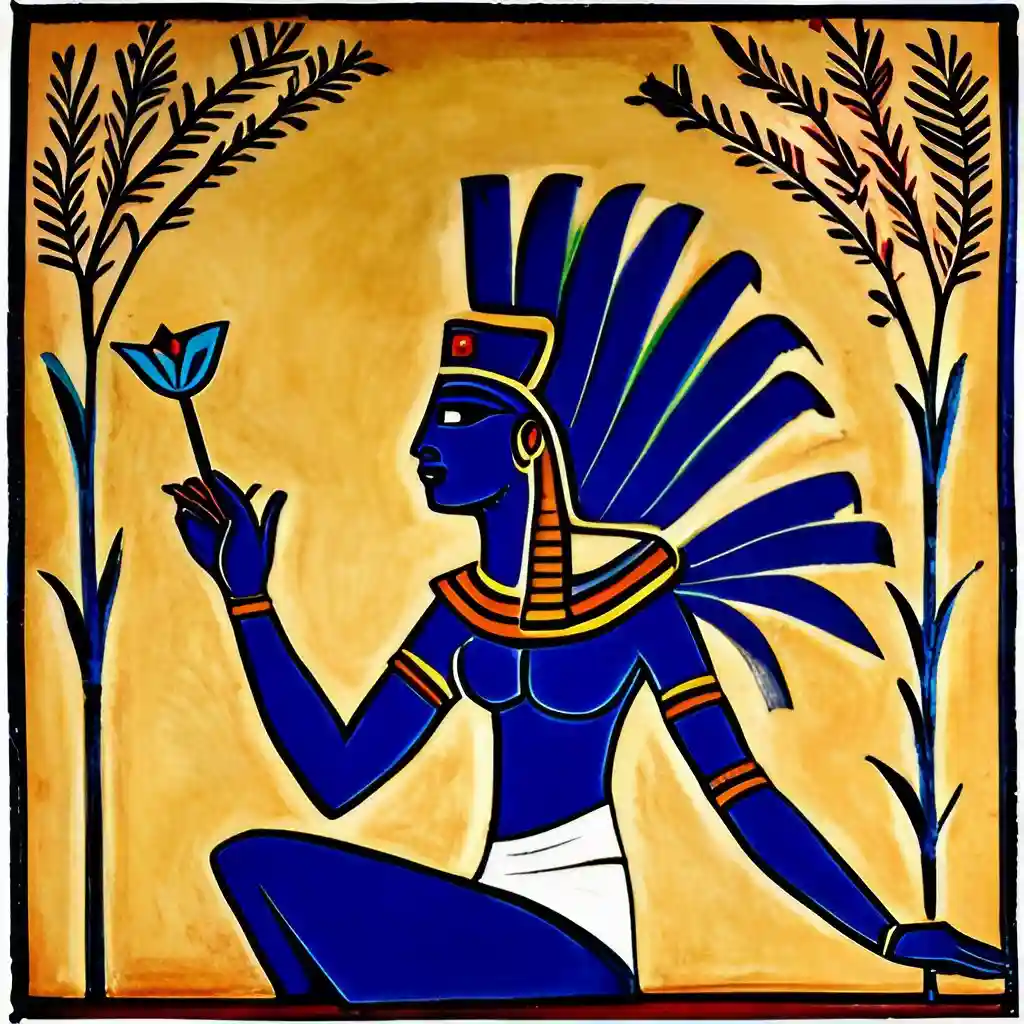
Cultural significance in other ancient civilizations
In Buddhist symbolism, the blue lotus represents wisdom and knowledge. The Buddha is often depicted sitting on a lotus throne, symbolizing the purity of body, speech, and mind. This association with enlightenment and spiritual awakening has made the flower an integral part of Buddhist culture.
In Hinduism, the flower is associated with the god Vishnu, who is often portrayed holding a lotus or surrounded by its petals. It symbolizes beauty, prosperity, and fertility.
In the Ancient Greek civilization, the blue lotus flower held a place of esteem and fascination. Greek scholars, impressed with its narcotic and aphrodisiac properties, often documented its use in their texts.
Homer, in his epic “Odyssey,” described it as a tantalizing flower that promotes a state of blissful repose and forgetfulness in those who consumed it. Similarly, in Ancient Rome, the blue lotus made its mark on Roman culture as a symbol of status and elegance.
It was commonly used as a garland for notable figures and religious idols, placed in tombs, and etched onto coins. Beyond its ornamental value, the blue lotus flower was also employed as a remedy for various ailments, underlining its medicinal significance in Roman society.
These historical instances underscore the botanical’s enchanting allure and its time-honored role in various ancient civilizations, illuminating a thread of commonality – the reverence for its metaphysical properties and perennial symbol of renewal.
Traditional Uses and Practices
Extracted forms of the blue lotus, derived from the whole flower version, have been used traditionally for a variety of purposes spanning centuries. These concoctions are well-known for their sleep-inducing properties and have been noted to provide an effective remedy for those struggling with sleep disorders.
They are commonly used as an anxiety reliever offering a sense of tranquility and peace. In addition to these medicinal uses, the blue lily has held significant importance in spiritual practices.
It was believed to be used in cleansing rituals to purify temples. Moreover, it was – and still is – valued for its mild psychoactive effects, including its ability to induce lucid dreams in certain cases.
The blue lotus flower may have even demonstrated success in purifying the blood, treating tuberculosis, expelling worms and parasites, and relieving edema. It has also been recognized as a potent aphrodisiac, enhancing libido and treating sexual health concerns.

This revered flower was extensively employed in the religious and healing ceremonies of high-ranking Egyptian priests. Its use was not limited to physical ailments but extended to spiritual practices as well. It was highly respected as an ancestral flower known to stimulate deep meditative energy, enhance third-eye function, and motivate lucid dreaming.
All in all, blue lotus has a rich history of traditional use, offering a wide range of benefits for both physical and mental health. Its calming properties and potential health benefits continue to make it a popular choice in traditional medicine.
Botanical Profile
The botanical profile of the plant reveals a fascinating tapestry of natural compounds that contribute to the diverse range of effects it provides.
Taxonomy and Scientific Classification
According to the USDA’s plant database, the blue lotus, scientifically known as Nymphaea caerulea, belongs to the Nymphaeaceae family. It is a type of water lily and falls under the Plantae kingdom. This aquatic perennial is part of the order Nymphaeales and the genus Nymphaea, which comprises approximately 50 species.
Its specific epithet ‘caerulea’ translates to ‘blue,’ reflecting its most common coloration, although variations can range from light blue to more intense violet.
Physical Characteristics
Blue lotus is a plant with certain distinct physical characteristics. Its leaves are broad and round, often reaching up to 40 cm in diameter, and float on the water’s surface. Its stem is long and flexible, allowing the leaves to rise above the water while anchoring the plant to the bottom of the pond or lake.
Its petals, which are its most striking feature, can grow up to 15 cm in diameter and exhibit a captivating shade of blue. These flowers typically have 20-25 petals arranged in a concentric pattern around a yellow central disc.
They naturally open up in the morning to welcome the sunlight and close in the afternoon, adopting a nocturnal blooming pattern. Interestingly, the thermoregulatory properties of blue lotus flowers assist them in maintaining a constant internal temperature even when external conditions fluctuate.
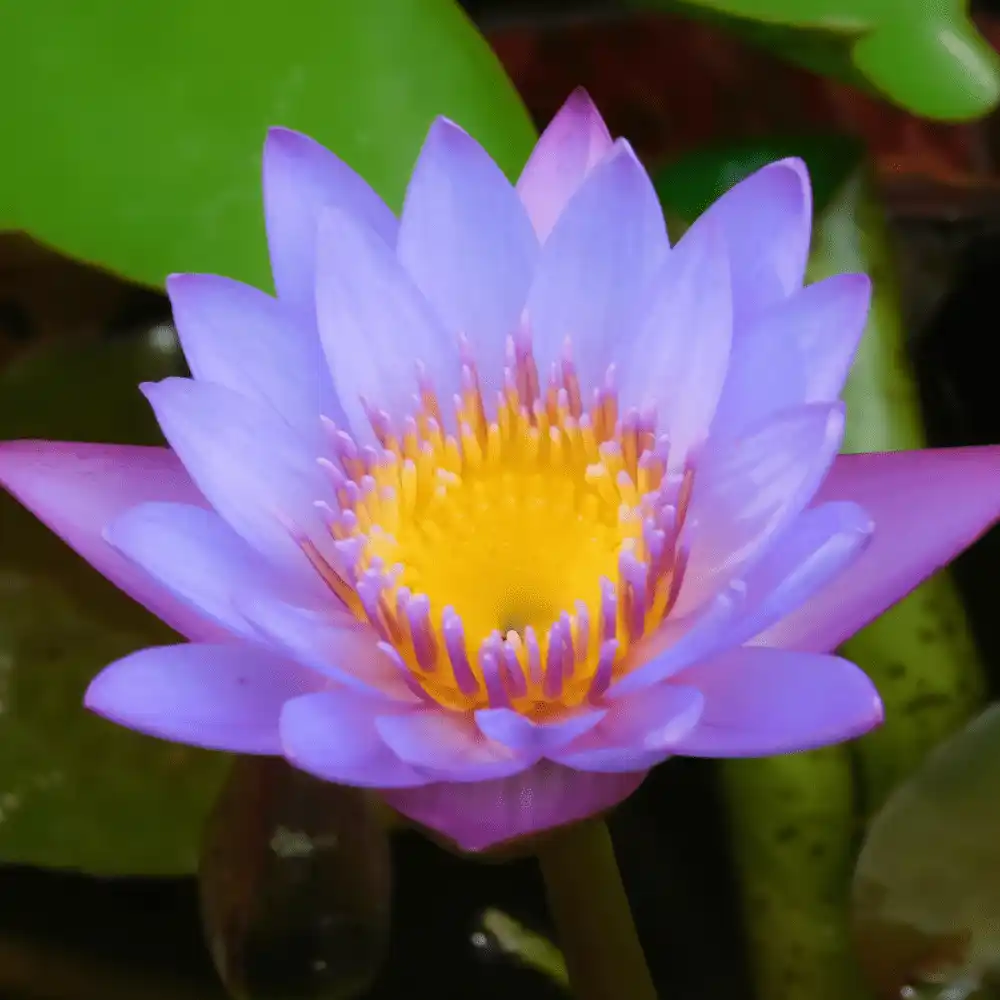
Growing Conditions
As for growing conditions, the blue lotus thrives in still, warm, shallow waters, such as those found in ponds, lakes, and marshes. It prefers full sun exposure and a temperature range between 20-30°C (68-86°F).
The plant can tolerate a variety of soil types but does best in slightly acidic to neutral pH levels. It’s worth noting that while it can adapt to different environments, it may not flower as profusely in less-than-ideal conditions.
The plant’s natural habitat is the Nile River Delta in Egypt and other parts of East Africa. However, with proper care and the right environment, it can be cultivated in different parts of the world. Its resilience and ability to thrive despite variations in climate and geography underscore its adaptability and robust nature.
Cultivation and Harvesting Methods
The most straightforward method of propagation is through seeds. These seeds are harvested when the seed head is still green but has fully developed seedlings. After planting, a warm, shallow, and still water environment should be created, mimicking the plant’s natural habitat. Full sun exposure is also crucial for the plant’s growth and flowering.
During the growth period, the blue lotus flowers attract bees that aid in pollination. This symbiotic relationship not only aids in the reproduction of the plant but also contributes to the local ecosystem by supporting bee populations.
Harvesting is a delicate process often done by hand. The timing is essential as the stolon, the part of the plant that allows it to spread, is ready to harvest two to three months after planting and must be harvested before flowering. Once the flowers are fully dried, they are collected and prepared for various uses.
The cultivation and harvesting of the blue lotus are not just about growing a plant; it’s about fostering a connection with nature. It’s about understanding the delicate balance of the ecosystem and contributing to it positively. By growing and harvesting blue lotus, you’re not just cultivating a plant, but you’re also nurturing a tradition that dates back thousands of years.
Extraction: Why and How?
People often choose extracts over whole-leaf versions of medicinal plants for several reasons, even though they are more expensive. Extracts are typically more potent than raw plant material, so users don’t need such high doses to achieve the desired effects.
This can make extracts more convenient and may be the only practical way for a person to reach whatever their target dosage is. Furthermore, extracts may be easier to consume or apply, especially when they are incorporated into blue lotus tea, tinctures, or topical products.
There are various methods of extracting compounds from the blue lotus. One of the most common is through making herbal tea, where dried petals are steeped in hot water. This process allows the active compounds in the petals to be released into the water, creating a drinkable extract.
Another method is using alcohol extraction, where the plant material is soaked in alcohol to draw out the active compounds. The final product can then be consumed directly or added to other beverages. Powdered extracts are made from liquid through a process called spray drying.
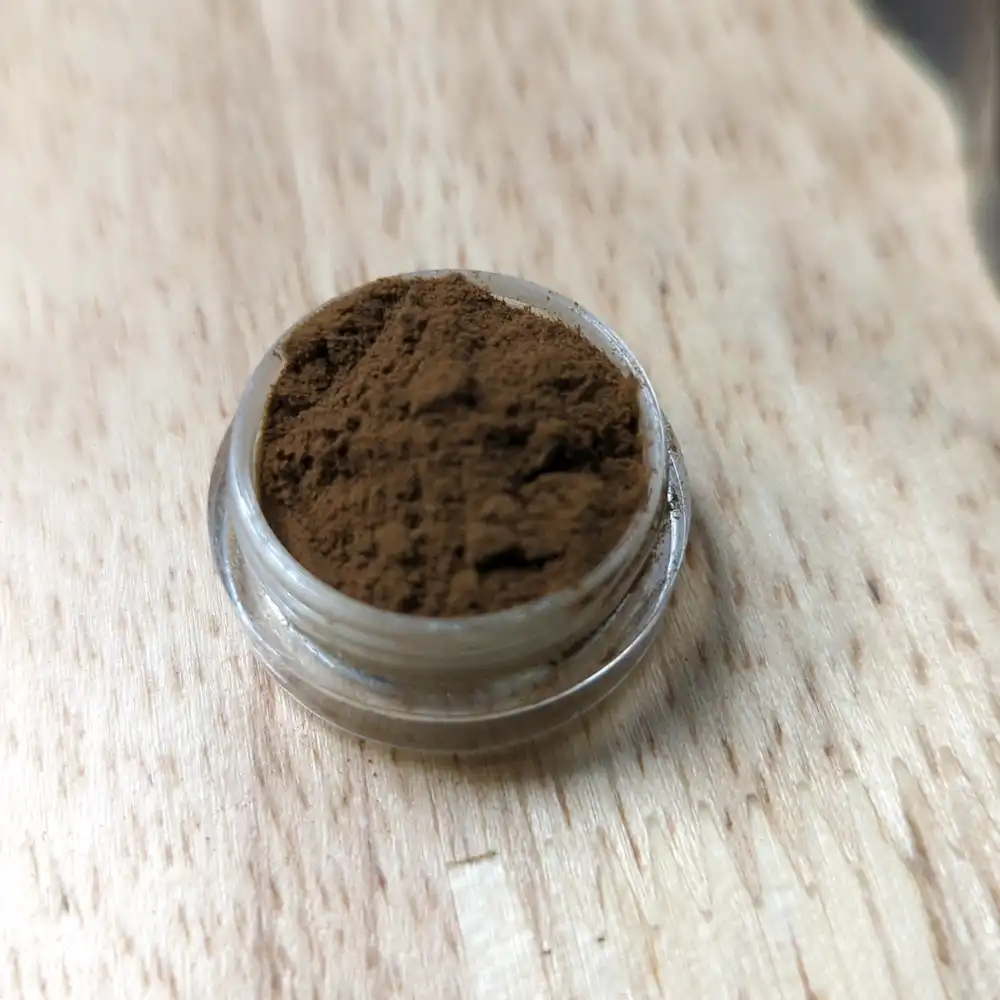
The plant’s unique chemical makeup, characterized by the presence of alkaloids like nuciferine and apomorphine, underpins its therapeutic potential.
Active Compounds and Their Effects
Two of the most significant compounds are apomorphine and nuciferine. These alkaloids play a crucial role in the plant’s psychoactive and medicinal properties.
Apomorphine is a non-selective dopamine agonist which stimulates dopamine receptors in the brain. This stimulation affects movements, rewards, and emotions, which can result in psychoactive effects when consumed.
Nuciferine, on the other hand, offers antispasmodic properties, making it potentially beneficial for those suffering from spasms or muscle tension. Moreover, these compounds’ presence in the blue lotus has led to their use as a sleep aid in some cultures.
It’s important to note that the use and effects of apomorphine can vary greatly depending on dosage and individual tolerance. The other chemicals present, like flavonoids and glycosides are not psychoactive but may be useful in alternative medicine.
In addition to these more well-known main chemicals, the blue lotus flower contains compounds that help protect cells inside the body. Some of these chemicals have shown antioxidant and anti-cancer properties.
Alkaloids and Their Therapeutic Properties
Apomorphine is a non-selective dopamine agonist, which means it stimulates dopamine receptors in the brain. This is responsible for the psychoactive effects of the blue lotus petals, influencing movements, emotions, and rewards.
Nuciferine, another significant alkaloid found in blue lotus, has been found to have antispasmodic properties. This means it can potentially help relieve muscle tension, spasms, or cramps in some people, which makes it suitable for a variety of conditions.
It has also been studied for its potential anti-diabetic properties. A research study published in the journal Pharmacological Research demonstrated that nuciferine could significantly reduce blood glucose levels in diabetic rats. This effect was attributed to nuciferine’s ability to enhance insulin sensitivity and protect beta-cell function.
These findings suggest nuciferine’s potential in the management and treatment of diabetes, although more studies are needed to confirm its effects in humans. In addition to these two alkaloids, the blue lotus flower also contains other compounds that provide many potential health benefits.
Some sources also suggest that it was used historically as an aphrodisiac to stimulate sexual desire. Further research is necessary to fully understand the potential benefits and risks associated with the alkaloids found in blue lotus.
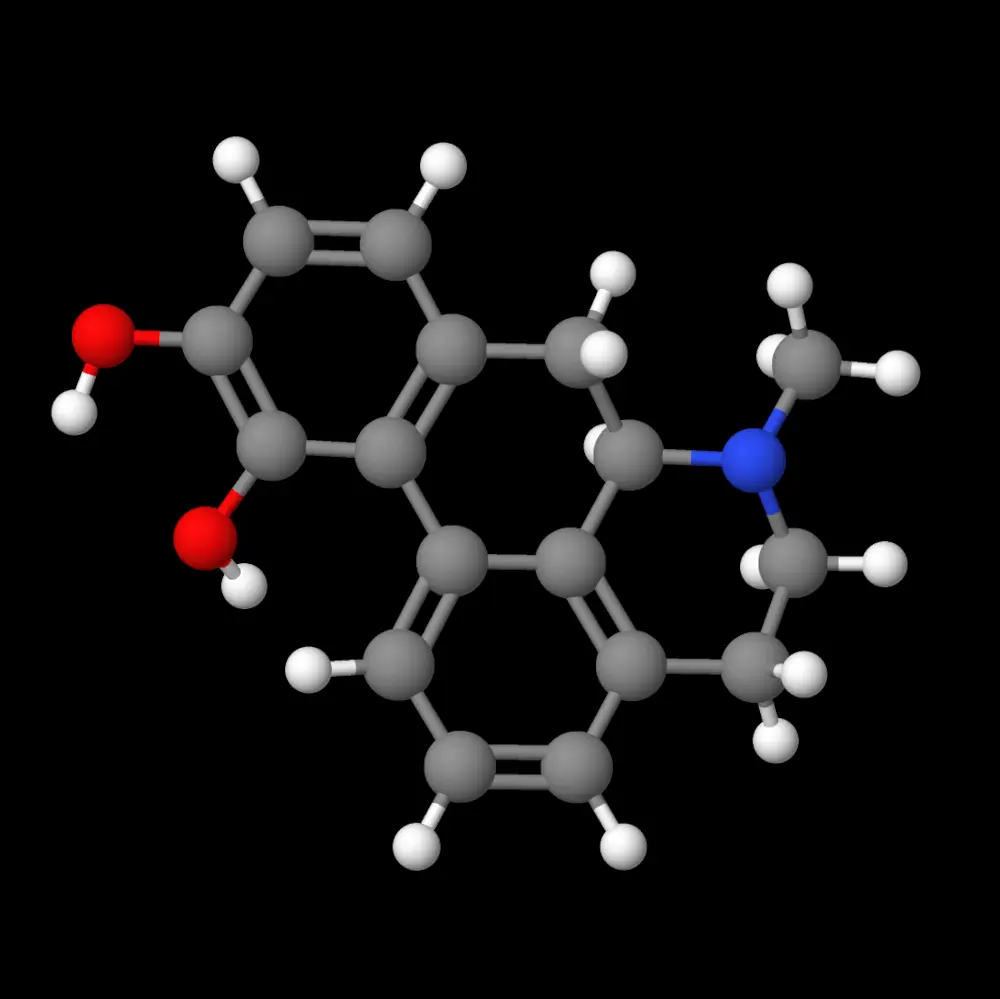
Essential Oils and Their Aromatic Qualities
This distinguished lotus is renowned for its intoxicating, sweet, and floral scent, which is often likened to a blend of spicy and fruity aromas. Its essential oil, extracted from the petals, carries these aromatic qualities.
Its oil is particularly high in something called squalene, which is a naturally occurring organic compound that is found in both plants and animals, including human skin. In skincare products, squalene is highly prized for its moisturizing and anti-aging properties.
Due to its molecular structure, squalene can penetrate the skin deeply, providing hydration, reducing wrinkles, and promoting skin health.
The oil also has a high concentration of a fragrant organic compound called phenethyl alcohol, which contributes to its floral scent. Moreover, the essential oil of these petals contains bioactive compounds like flavonoids, terpenoids, and alkaloids.
This not only contributes to its therapeutic properties, but also adds depth to its fragrance profile, making blue lotus essential oil a prized ingredient in perfumery, aromatherapy, and personal care products.
Medicinal Uses
This special lotus flower has been used for centuries in traditional medicine for its potential healing benefits. Let’s take a look at its rich history in various cultures where it was used for its therapeutic properties.
Ancient Medicinal Practices and Beliefs
In the ancient world, when the blue lotus flower was heavily used, medicinal practices were a blend of empirical observations and shamanistic healing rituals dating as far back as the fourteenth century B.C.
For instance, in ancient Egypt, where the flower was considered sacred, medicine was practiced with highly professional methods, and they had advanced knowledge of anatomy and surgery.
The Egyptians combined supernatural elements with natural remedies, including herbal treatments. Their medical papyri, like the Ebers Papyrus, contain hundreds of prescriptions and remedies for various ailments, reflecting their extensive knowledge of herbs and their medicinal properties.
In contrast, ancient Greek medicine, another influential tradition of the time, focused on achieving harmony between the mind and the body. Famous physicians like Hippocrates and Galen both advocated for lifestyle adjustments and dietary modifications as part of disease prevention and treatment. They also documented their medical knowledge systematically, contributing significantly to the field of medicine.
Traditional Remedies for Various Ailments
One of the most common traditional uses of the blue water lily is as a natural sedative. It’s believed to have sedating effects that can help relieve symptoms of insomnia and anxiety.
Its ingredients are commonly extracted when making blue lotus flower tea. The alkaloid nuciferine, present in the extract, is thought to be responsible for these sedative and anti-anxiety effects.
In addition to its relaxing properties, it has also been used traditionally for its potential analgesic effects, helping to alleviate pain and inflammation. Some historical records suggest that consuming blue lotus flowers was a preferred way to relieve migraine headaches and menstrual cramps.
Moreover, it has been used in traditional medicine to stimulate blood circulation and increase sexual desire, showcasing the multifaceted role of blue lotus in traditional healing practices.
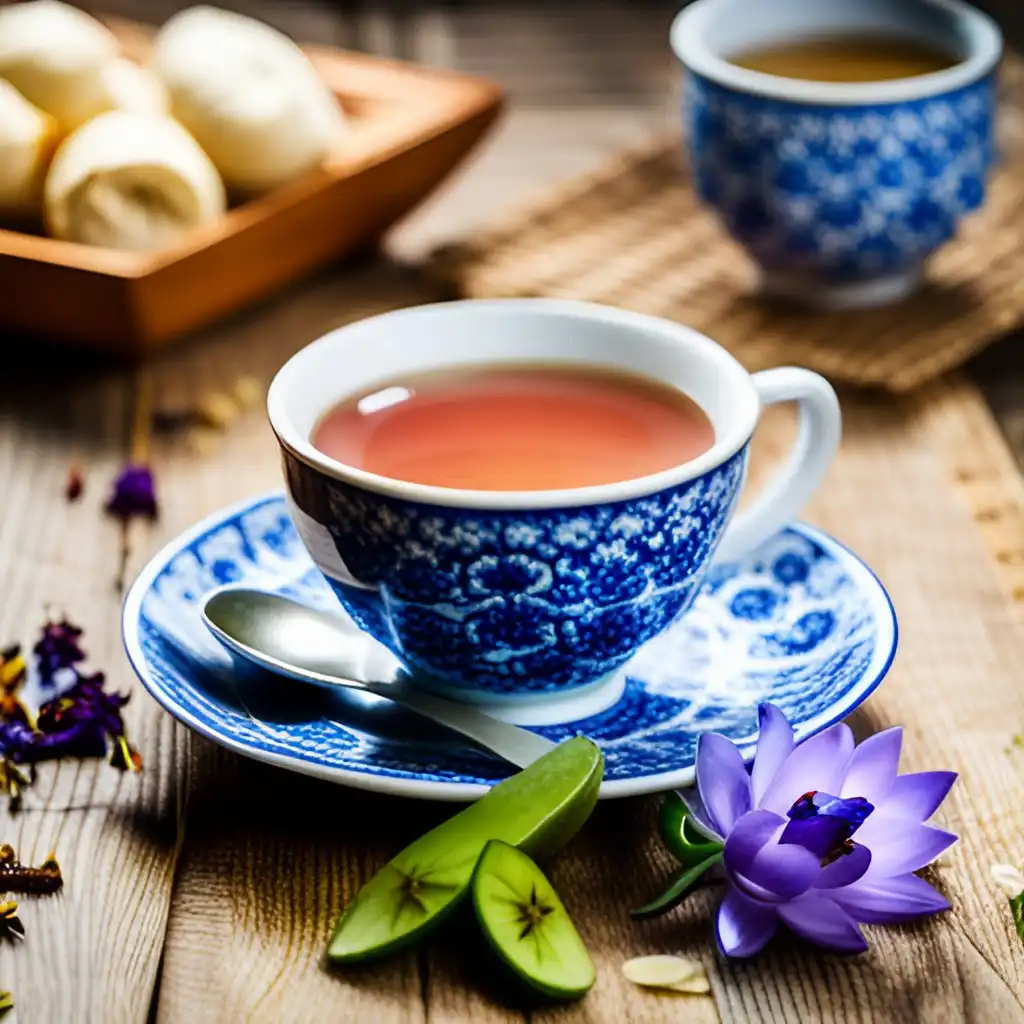
Modern Scientific Research on Medicinal Benefits
Modern scientific research has begun to explore the benefits and uses of this blue flower, with studies focusing on its key compounds like nuciferine and apomorphine. Nuciferine specifically has been subject to several studies due to its potential therapeutic properties.
One of them explored the impact of blue lotus on growth and hemato-immunological parameters – or changes in the blood due to disease – in Indian major carp, demonstrating its nutraceutical properties for boosting growth and health benefits. This research points towards the potential of the flower’s components in aquaculture, but it also suggests that they could have beneficial effects on growth and immune response in other organisms.
An older 1972 study found apomorphine to be effective in treating alcoholism. Since then, these findings have been replicated. Additionally, this alkaloid has been shown in countless other trials to be a highly effective treatment for those with Parkinson’s disease.
According to more research done into natural ingredients with treatment potential, nuciferine has shown anti-obesity and cholesterol-lowering potential as well as the possibility of helping with inflammation and acting as an antipsychotic.
Research on the toxicity of blue lotus, published in Military Medicine, highlighted that symptoms from ingestion or inhalation were largely self-resolving. This indicates that, when consumed in moderate amounts, it appears to be relatively safe, although individual reactions can vary.
Psychological Effects
The blue lotus flower, often revered for its mystical properties, may have a profound psychological impact on users. The sacred blue lily, as it is sometimes called, is known to create a mild sense of euphoria and promote calmness.
People also commonly use blue lotus to reduce anxiety and improve sleep. When consumed, it can create a relaxed, open sensation that both soothes and stimulates the mind. Its active ingredients have shown therapeutic effects in several mental health diseases.
Enhancing Meditation and Spiritual Practice
Spiritually, the blue lotus flower holds significant power. It has potent effects on the emotional, mental, and astral (dream) planes, symbolizing regeneration, fertility, water, and plant life. It’s not uncommon for users to feel a deeper connection with their intuition and higher self after using the blue lotus.
This flower has been linked with intuitive ascension, making it a popular choice among spiritual herbalists. Its calming and relaxing effect is said to promote peace, harmony, and balance, aligning perfectly with many spiritual practices.
Anecdotal Evidence and User Experiences
Based on anecdotal evidence and user experiences found online, blue lotus appears to have a variety of effects on those who use it. Many users report that consuming the flower’s petals, particularly as a tea, can significantly reduce stress levels and anxiety, leading to more restful sleep. For more user reports and other educational information from a trusted source that has been around seemingly since the beginning of the internet itself, check out Erowid.
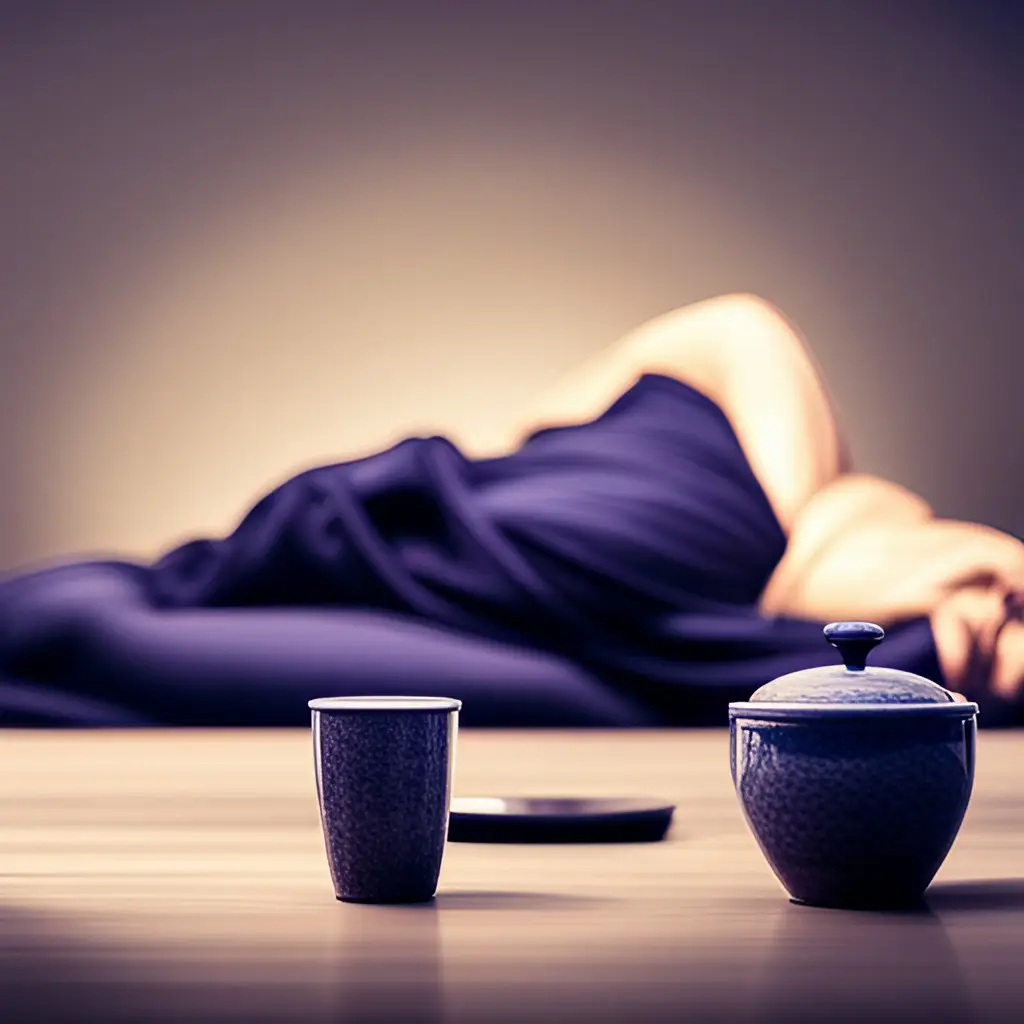
Some liken the relaxing effects to that of chamomile, with many using it as a means to unwind and de-stress. In addition to its calming effects, some users have reported that blue lotus helps them feel more alert and focused.
This makes it a popular choice among those seeking to enhance their concentration or productivity. Furthermore, some users have reported experiencing mild euphoria and even hallucinations after ingesting or inhaling higher doses of more potent extracts.
A unique aspect of the experience reported by some users is the potential of the flower to enhance dream states. Users have reported experiencing vivid and enhanced – even lucid – dreams after consumption, particularly if tea was the method of choice.
Some have also claimed that it can help relieve depression by prompting introspection and greater examination of the factors contributing to their depressive state. However, it’s important to note that these are individual experiences and effects can vary from person to person.
Potential Applications
Moving forward, let’s delve into the potential applications of blue lotus, exploring its various uses and benefits in different areas of life.
Alternative Therapy and Holistic Healing
Nymphaea caerulea has been revered as a powerful plant in alternative therapies and holistic healing for centuries. Originating from Ancient Egypt, it was considered a symbol of rebirth and was often used in religious ceremonies and rituals.
The flower is believed to have psychoactive properties, inducing a state of relaxed, euphoric consciousness, and was thus used by the ancient Egyptians as a spiritual enhancer. Practitioners of contemporary alternative medicine use blue lotus flowers for their potential therapeutic benefits.
It’s commonly used in aromatherapy, where its soothing scent is believed to have calming effects on the mind and body, helping to reduce stress and anxiety. Some practitioners also use extracts in massage oils, attributing to anti-inflammatory and pain-relieving effects.
Moreover, the blue lotus flower is often brewed which is said to have a mildly sedative effect, aiding with the symptoms of insomnia and promoting a good night’s sleep. Remember, the blue lotus flower contains antioxidants, which are believed to support general well-being and boost the immune system. Some even claim that the flower can enhance memory and increase blood circulation.
Integration into Natural Skincare and Beauty Products
The integration of blue lotus into natural skincare and beauty products is revolutionizing the beauty industry. Known for its hydrating, smoothing, and radiance-enhancing properties, this special flower is increasingly becoming a key ingredient in many skincare products.
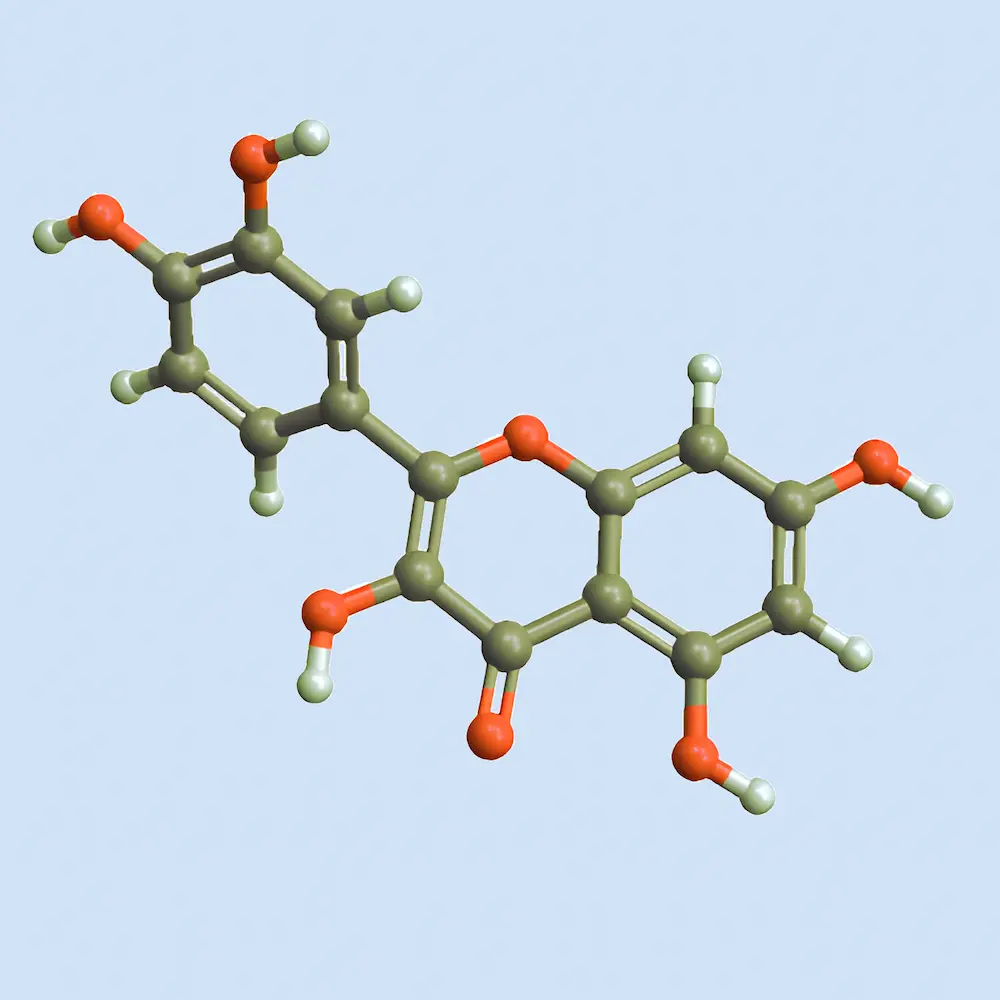
It’s rich in potent flavonoids such as quercetin, kaempferol, and myricetin, offering natural antibacterial benefits and a wealth of antioxidants that help protect skin against signs of aging. Moreover, products infused with it are considered non-comedogenic, meaning they won’t clog your pores, making them suitable for all skin types.
From creams and serums to masks, the versatility of blue lotus allows it to seamlessly integrate into diverse skincare formulations. Embracing these products means not only nourishing your skin naturally but also embarking on a journey toward a more holistic and ancient approach to skincare.
Emerging Trends and Future Possibilities
The blue lotus flower is being increasingly recognized for its potential therapeutic benefits. Since it is believed to aid in treating conditions such as erectile dysfunction, depression, and anxiety, further research into its different chemical components may be useful in the development of future mainstream treatments.
Dosage Guidelines and Responsible Usage
The amounts of blue lotus taken by people will depend on individual body chemistry, tolerance, route of administration, strength of the base product, and other variables. There are no “officially recommended” guidelines.
Remember, the response to a given amount may vary widely from person to person. Start small and work your way up as needed.
If your blue lotus will be consumed as a tea, sources suggest using between 2-3 grams of dried blue lotus flowers per cup. The tea can be steeped in hot water for 5 to 10 minutes. Consuming 2-3 cups of this tea every day is generally considered safe and without any common side effects.
When it comes to liquid or powdered blue lotus flower extract, dosage guidelines can vary depending on the concentration. For example, for a high-quality 25x blue lotus extract concentration taken orally, an average person may want to begin with around 200-400 mg or so.
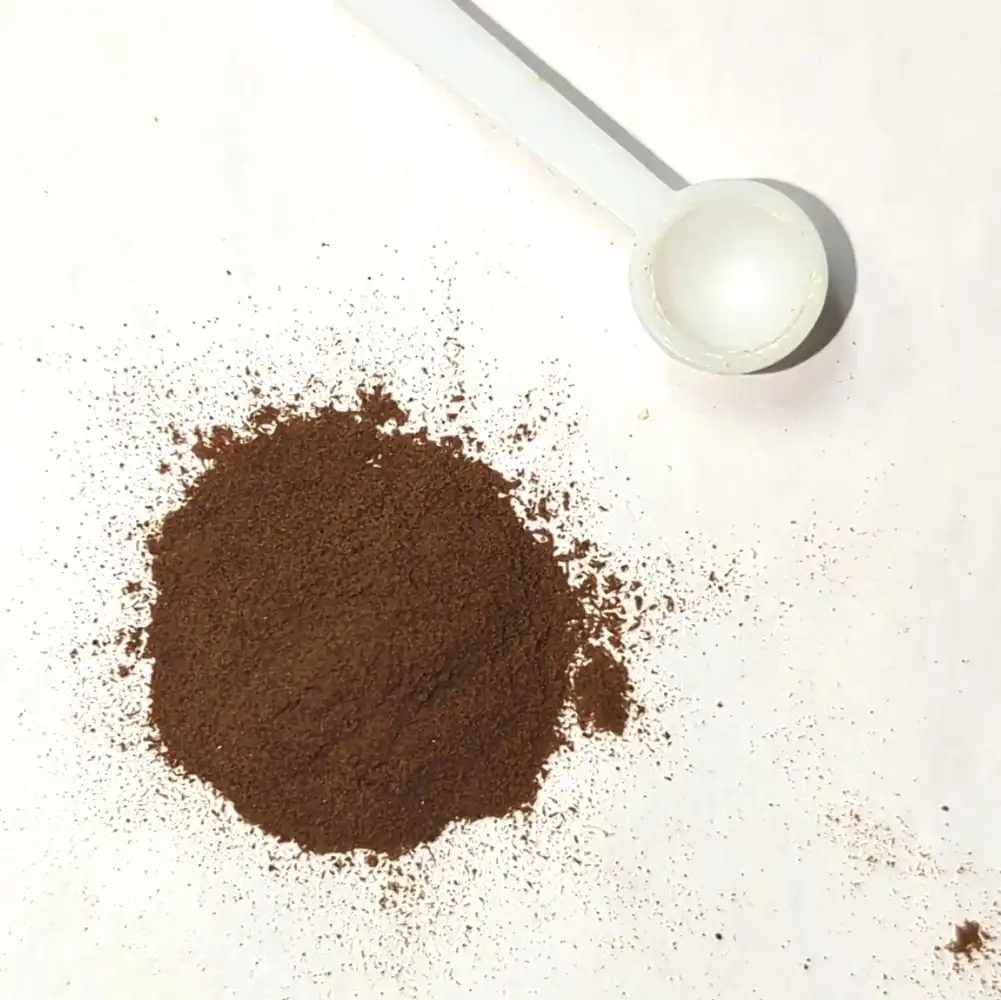
The first signs of relaxation should be felt within 45 minutes before eventually leading to a peak that can carry on for several hours and even into the next day according to some anecdotal reports. Some people prefer to smoke blue lotus because this method increases the amount absorbed relative to eating it and yields a faster onset of effects.
However, the effects are felt for a shorter period with this method, so there is an exchange that is made. If you decide to go this route, it is advisable to start with a pinch and wait 10 minutes before deciding whether more is necessary. Some commercial preparations are available in e-liquid form for use in vaping devices.
Although blue lotus contains the alkaloids apomorphine and nuciferine, specific dosage recommendations for these compounds are not readily available in the sources provided, likely due to a lack of extensive research. It’s important to note that while these compounds may contribute to the effects of blue lotus, they are not typically isolated for individual use.
Discussions With Doctors & Interactions
Worth noting is that mainstream doctors typically receive little training in the areas of natural and alternative medicine or remedies during their education and practice. Their focus is largely on mainstream treatments, predominantly through the use of pharmaceutical products.
As a result, they may lack the necessary knowledge to advise patients about the use and benefits of alternative remedies and dietary supplements accurately.
That said, you should talk to a healthcare professional if you are on any other medications, prescription or otherwise, that could potentially interact with the chemicals in the lotus and any other botanical products you’re taking.
Although the chemical is refined and in much greater concentration than you’ll find in the petals of the flower, pharmaceutical-grade apomorphine is considered to have “major” potential negative interactions with many prescription drugs and is contraindicated in cases of hypotension since this chemical itself may cause a reduction in blood pressure.
Legal Status and Regulations
In the following section, we’ll delve into the complexities surrounding the legal status and regulations of blue lotus and similar substances. These topics are particularly significant due to the varying interpretations and enforcement practices across different jurisdictions.
However, its legal status remains a gray area in many parts of the world. We will examine the current laws, regulatory challenges, and ongoing debates about these substances, which will offer insights into the complex landscape of legalities and regulations surrounding such substances.
Worldwide Legality Overview
The legal status of blue lotus varies globally. In the United States, it is not approved for human consumption by the Food and Drug Administration.
As a side note, FDA-approved prescription medications kill over 100,000 people annually even when taken as directed – the third leading cause of death in the United States as of this moment.
Keep in mind that the FDA receives about half of its income from pharmaceutical companies (and growing), which are inherently opposed to natural alternatives to the drugs that produce profits for their shareholders. It’s now more important than ever to think critically.
In Latvia, Nymphaea caerulea is illegal and classified as a Schedule 1 drug. Possession of quantities up to 1 gram can result in fines of up to 280 euros. Interestingly, in Australia, blue lotus is legal.

In most other places, it is not a restricted drug and may be grown, marketed, and acquired lawfully. However, it’s important to note that even where it is legal, there can be counterfeited or adulterated products, so look for a vendor that is transparent about its sources.
Current Regulations and Restrictions
Blue lotus is not a regulated herb in most U.S. states, which means it’s technically legal to grow, sell, and buy the plant and its extract forms. The one exception as of this time is Louisiana, where it is expressly illegal to possess.
Specifically within the military, the use of blue lotus is prohibited under Army Regulation (AR) 600-85, para 4-2, I, (1) and (9), and soldiers who violate this policy may face disciplinary action. Despite the lack of regulation, it’s important to note that drug laws are arbitrary and the legal status of botanical can change at any time.
Where to Buy Blue Lotus Flower & Extracts
When you are shopping around for your lotus or any botanical supplement in general, there are a few things you want to consider before pulling the trigger:
- Time in business: You want to make sure a vendor has been around for at least a couple of years before trusting them with something you put into your body. Generally, companies that provide ineffective or harmful products won’t be around that long.
- Transparency: A trustworthy vendor should provide clear information about the source and composition of their products. This includes details about where the herbs were grown, how they were processed, and any other ingredients added.
- Testing: High-quality vendors will have their products tested by third-party laboratories for purity, potency, and safety
- Size of company: As companies grow larger, they inevitably migrate their manufacturing practices towards mass production, which is great when the goal is to bring in as much revenue as possible. However, quality often suffers as a result as each item or order no longer gets individual attention.
- Reviews and reputation: Consider the experiences of other customers. Positive reviews and a good reputation within the industry can be strong indicators of a high-quality vendor.
- Customer service: Good customer service is a sign of a company that stands behind its products. They should be responsive and should welcome you rather than treat you like an annoyance.
-
25x Blue Lotus Extract Powder
$14.00 – $49.00
Online Retailers and Specialty Stores
Acquiring blue lotus, or any herbal supplement, can be done through both online retailers and specialty stores. The process for each is slightly different:
Online Shopping:
- Research: Start by researching reputable online retailers that sell it. Look for vendors that provide detailed product information, have positive customer reviews, and adhere to safety and quality standards.
- Product selection: Once you’ve found a trusted retailer, browse their selection of blue lotus products. These might come in various forms such as dried flowers, powders, tinctures, or teas.
- Read product details: Carefully read the product details to understand the concentration, dosage, and any other instructions. Note the ingredients to ensure there are no additives or contaminants.
- Purchase: Add your chosen product to your cart and proceed to checkout. Most online retailers will require you to create an account if you don’t already have one. Then, provide your shipping information and complete the payment process.
- Delivery: Wait for the product to be delivered to your doorstep. Delivery times can vary depending on the retailer, the chosen courier, and your location.
Shopping at Specialty Stores:
- Find a retailer: Research local specialty stores or health food stores that carry blue lotus. You might also find it at stores specializing in herbal supplements or botanical extracts.
- Physically get to the store: Visit the store and ask for assistance if needed. The store staff should be able to guide you to their selection of these products.
- Product selection: Similar to online shopping, consider the form of the product (dried, powder, tincture, tea, etc.), the concentration, and any included instructions or ingredients.
- Purchase: Once you’ve chosen a product, you can purchase it at the store’s checkout counter. No waiting for delivery! Pay with cash to keep these types of purchases private. Some brick-and-mortar stores even let you pay with cryptocurrency.
In all cases, it’s important to remember that the quality and safety of herbal products can vary widely as there are inconsistent and dishonest retailers out there. Be sure to always choose a trusted source.
Considerations for Sourcing and Purchasing
When sourcing blue lotus, it’s important to consider the applicable native region and people involved in its cultivation and harvesting. The geographical location plays a significant role in the quality of blue lotus.
The plant naturally thrives in warm, tropical climates along the Nile River and other similar water bodies. It prefers standing water and full sun exposure. Therefore, when sourcing blue lotus, you should ensure that the product comes from regions that provide optimal growing conditions for the plant.
This typically includes countries in East Africa or Southeast Asia, where the climate and environment are conducive to growing high-quality blue lotus.
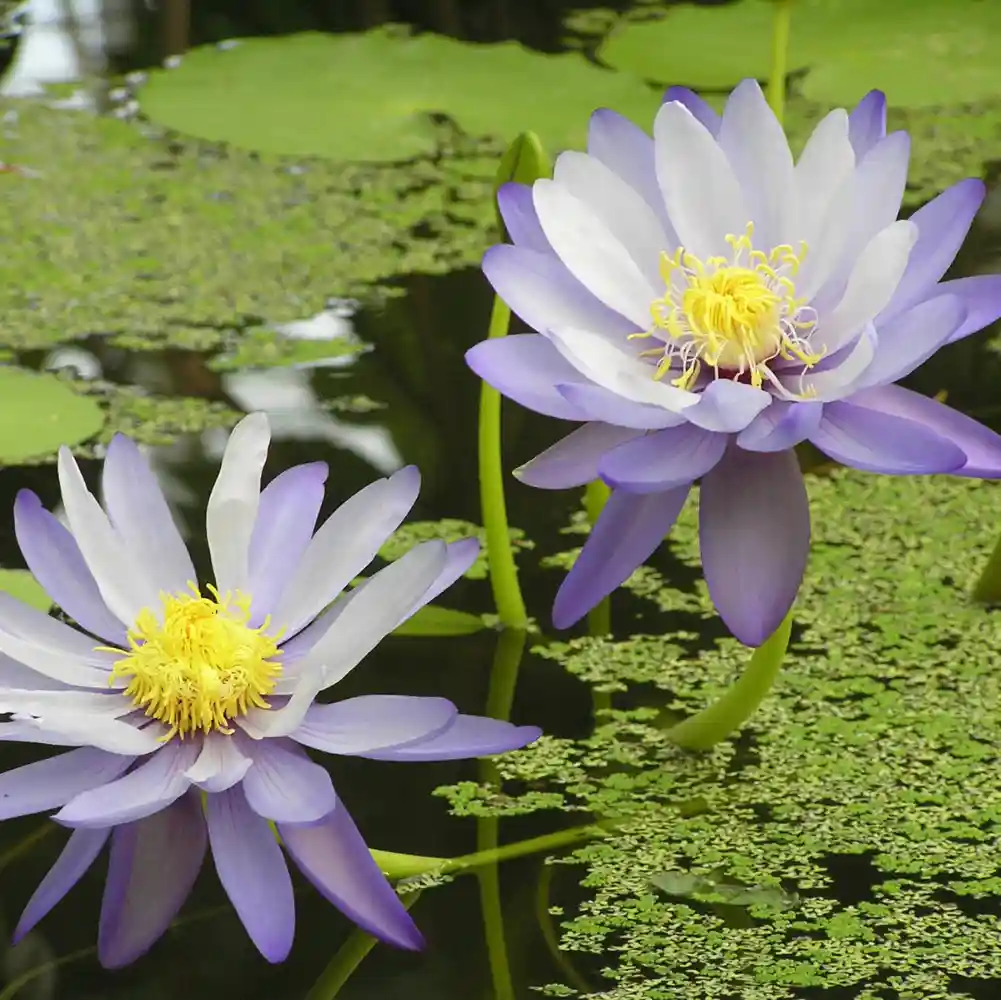
Also, consider the people involved in the cultivation and harvesting of blue lotus. Sustainable and fair-trade practices should be prioritized to ensure that the farmers and workers are paid fairly for their labor and that their working conditions are safe and humane.
By supporting suppliers who adhere to these practices, you’re not only ensuring the quality of your blue lotus products but also contributing to the welfare of the communities that produce them. Also, smaller operations tend to be more focused on quality since they are more directly accountable to their customers.
Cultivation at Home
Growing blue lotus at home can be a rewarding experience. This beautiful water lily not only adds aesthetic appeal to your garden but is also steeped in history and has various uses in herbal medicine. However, it’s important to remember that growing blue lotus requires specific conditions and a good deal of care.
Here are some basic instructions for cultivating blue lotus at home:
- Choose the right spot: Blue lotus is a tropical water plant that thrives in full sunlight and warm temperatures. It’s best grown in a pond or a large water container placed in a sunny location. The depth of the water should be around 12 to 18 inches.
- Planting: You can start blue lotus from seeds or rhizomes. If you’re using seeds, soak them in warm water until they sprout, then plant them about one inch deep in clay soil at the bottom of your pond or container. If you’re using a rhizome, plant it directly into the soil
- Care: Blue lotus needs a lot of nutrients to grow well. Feed your plant with a slow-release aquatic fertilizer during the growing season, following the package instructions. Make sure the water is relatively still and maintain a consistent water level..
- Pruning: Prune dead leaves and flowers regularly to encourage new growth and prevent rot.
- Winter care: In colder climates, the blue lotus may go dormant in winter. If your pond or container is likely to freeze, consider moving your plant indoors or into a greenhouse.
Growing blue lotus at home can be a fun and rewarding project. With the right conditions and care, you can enjoy the beauty and benefits of this fascinating plant.
Conclusion
In wrapping up, we’ve explored the various facets of the blue lotus – a plant deeply imbued with historical, cultural, and medicinal significance. The process of sourcing this distinctive flora necessitates a thorough understanding of its indigenous regions and the influence of these areas on the plant’s quality.
Additionally, the dedication and welfare of those involved in its cultivation are of paramount importance. Ensuring that fair and sustainable practices are followed contributes not only to the caliber of the blue lotus products but also to the well-being of the communities involved in its production.
Moreover, engaging in the at-home cultivation of the blue lotus is an achievable endeavor. With the appropriate conditions and due attention, one can bask in the aesthetic charm and inherent benefits of this mystical plant. By adhering to the specific guidelines to plant, nurture and prune this water-loving lily, home growers can enjoy a thriving, vibrant blue lotus right in their gardens.
Ultimately, our relationship with the blue lotus goes beyond simple consumption or aesthetic appreciation. It is a bridge that connects us to ancient traditions and cultural practices, a living artifact that we must strive to understand, respect, and preserve. By sourcing responsibly and cultivating mindfully, we not only enrich our own lives but also contribute to the sustainable use and conservation of the blue lotus for generations to come.

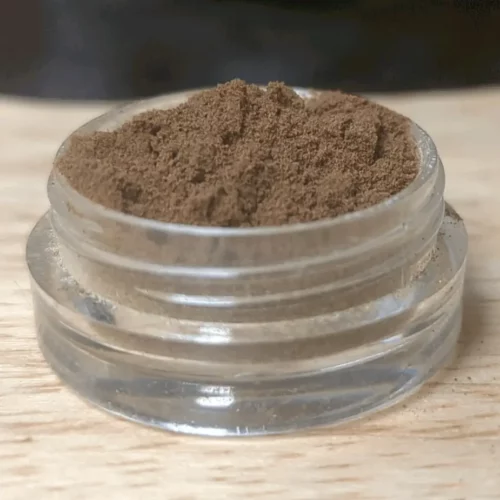

Latest from our blog
Please Read….This is Urgent
In loving memory of Ryan, a special individual who recently passed away, we honor his [...]
Damiana Exposed: Special Look At Turnera diffusa (2023)
Damiana Exposed: Special Look At Turnera diffusa (2023) Damiana is a wild shrub native to [...]
Kanna: A New Look At An Exciting Mood Booster (2023)
What is kanna? Some say the botanical has similar effects to MDMA, or ecstasy. Others [...]
Blue Lotus Flower: Unveiling Its Mystical & Therapeutic Powers
To cut to the chase and pickup potent 25x blue lotus extract today while enjoying [...]
Red Bubble Kratom Extraction: A Comprehensive Guide
As a kratom enthusiast, have you ever wondered if there was a method for getting [...]
Aug
Maeng Da Kratom 101: Accurate Info You Can Trust
Maeng Da kratom may be the most popular kratom strain on the market today. The [...]
Aug